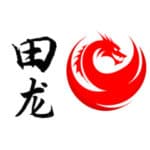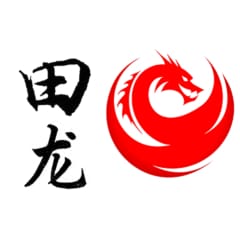Employees.
They are the most critical asset in any organization. The knowledge / skills they have, plus their relationship with key clients are often irreplaceable and can make or break the organization. That’s why human resource planning is vital to any institution. It’s an integral part of all organization strategies.
The main objective of HR planning is to ensure that you have the right people, at the right time, in the right jobs. Other than that, it has huge benefits for any institution. Here are a few:
- Guarantees that the HR department can adapt to changing requirements
- If there is a shift in the workforce market, your organization isn’t caught off guard
- The company can harmonize automation and other advanced technologies faster
- During growth phases, the institution can better prepare for the critical skills needed
- Enable the firm to hone the skills of current employees
Now, there are different ways to approach HR planning. But the easiest method is to make it systematic. That means having a place to start, and another to finish. You will only need to incorporate the following seven steps:
1. Workforce Planning
It’s the first step of creating a concrete employee game plan. Generally, it involves examining your current workforce and forecasting any future needs. Workforce planning helps to provide the company with a sharper collective eye in determining future staffing requirements and risks of staffing shortages.
Also, the workforce strategizing streamlines the company recruitment strategy. So, is there a formula you can use to plan for the workforce? Absolutely.
Consider the following pointers:
Evaluate the organization’s cardinal plots
It should help you land relevant info that will guide you in the work planning process. This information can include your company’s business and annual plan, as well as the strategic plan for the current project at hand. You should also consult with the project managers on overall onboarding goals and duration of engagement (with new employees).
Analyze the Current Workforce
Take a more in-depth look at the current employees you have now to identify areas where frequent understaffing might occur.
Develop an action plan
This is what will enable you to fill any gaps you identify after step (a) and (b). It can include restructuring the current labour force or outsourcing specific tasks.
2. Applicant Evaluation and Selection
After comprehensively planning for staff, you’ll have a clear picture of where there is a need for reinforcement. Consequently, the organization will require recruitments, which is why the next stage involves strategizing for evaluation and selection of applicants. If you don’t plan for those interviews, you’re less likely to get the right fit for your organization.
How do you plan for successful applicant evaluation/ selection?
Profile the Positions
The establishment of functions is crucial for effective interviewing, as well as hiring. Once you figure out the essential functions of a given position, it becomes simple to determine that job’s specific requirement.
Establish specific requirement
Determine the ability, knowledge, skills, experience, etc. required to fulfil the functions arrived at by profiling each position.
Establish your Priorities
Figure out the critical requirements for your applicants- those they must have. Also, outline the traits the desirable traits- those that your successful interviewees can acquire on the job.
3. Recruitment
Recruitments come next after evaluation and selection. Here, you also can’t dive in blindly. You need a definite plan of action that will ensure that the recruitment process is a masterstroke.
Contact Your HR Employment Recruiter / Consultant
It’s most suitable to consult with professionals before you begin staffing. Consultants like Tianlong Services can help you understand each position, define the selection criteria, plus come up with questions for special requirements. These experts respond to any questions you might have on the interview process, interview questions, or applicants referred.
Choose a Selection Committee
You cannot choose the best candidates for each position on your own. So you ought to create a diverse selection committee, complete with its chairperson. The chairperson should be the overseer of all interview sessions and should ensure fairness for all applicants.
Creating an Interview Plan
Review each position on offer to identify the abilities, knowledge, and skills required to successfully undertake the job. With that information in mind, prepare two sets of questions: those for the interview, and those for checking references. Additionally, come up with interview rating scales for each position.
Tianlong Services can assist you with this process.
Screen Carefully
Ensure that each application is carefully and reasonably screened against selection criteria emanating from the interview plan. Your selection committee should conduct a screening process that identifies only the appropriately qualified applicants. They should also pinpoint areas where there’s a need for clarification.
Contacting the Applicants
When inviting successful candidates for interviews, ensure that the committee chairperson advises them on the date, time, location, interview procedures, expected length of meetings, and parking availability.
Interviewing
It’s the most crucial stage of any recruitment exercise. The interview predetermines the organization-employee relationship. Moreover, all meetings should comply with state or federal laws. Consider the following guidelines when planning for interviews:
Create a comfortable setting- Select a quiet, relaxing, distraction-free area to conduct interviews.
Follow a logical sequence- Maintain a constant formula for asking questions and allow each candidate an equal amount of time to answer.
Let each candidate talk- Every interviewee should around 85% of the entire conversation. The panelist should speak only when it’s necessary.
After interviews, it’s best to check with references and verify each candidate’s background. You can then make your selection and decide on the payroll. But HR planning does end with you successfully recruiting skilled labour.
4. Career Development
If an employee can’t visualize a career trajectory, then he/ she won’t be in your organization for the long haul. That’s why you need to plan for the career paths of your employees. So how do you strategize for the career development of your workforce?
There’re a few things you’ll need to do:
Conduct annual career discussions and individual development plans with employees. Departmental advisors should also do the same.
Create activities and programs that provide skill development. Some examples are cross-training, mentoring, internships, career strategy groups, coaching etc.
Ask departmental supervisors to support employee development efforts.
Champion flexible working arrangement for staff members.
Encourage applications for other positions to create a dynamic workplace.
You can also play a hands-on role when it comes to workforce career development. It involves assuming different roles that encourage employees’ growth.
They include:
Coach
assists employees to identify their weaknesses, strengths, interests, plus values by sustaining open, effective communication, as well as continuous encouragement.
Advisor
Provides resources, realities, and other organizational information to employees. It helps the staff to develop realist career goals, understand current / limitations/ opportunities, and conduct feasibility studies on various career options.
Appraise
rEvaluates the workforce’s performance in an honest way, relating it to potential opportunities. Appraising incudes providing frequent feedback to foster development and conducting performance appraisals that define weaknesses, strengths, plus career development needs.
Referral agent
Helps employees to meet their development goals via contacts with resources and people. It involves ensuring that employees get exposure, visibility, and experience by participating in task forces or committees.
5. Employee Training
In HR planning, employee training programs are vital since they enable staff to get better at what they do. That translates to increased organizational productivity. What’s more, employee training boosts staff engagement and workplace sensitivity, camaraderie, plus competence.
Therefore, it’s essential to design training programs that fit individual needs. Those that can enable each staff member to receive the support he/ she needs. Here are several things to consider when planning for employee training:
Start Early
There isn’t a right time to start creating training programs. If your employees seek growth, then the organization needs these programs.
Plan Well
The most important aspect of any practicum program is engagement. How engaging your training program is determines its overall value to the employees. Thus, come up with plans that comprehensively cover what employees need.
Consider the appropriate systems and tools for training
After figuring out the right framework for sharpening employees, you ought to fill that program with proper content.
6. Employee Compensation and Benefits
Benefits and compensation are critical factors in retaining top talents in any industry. A firm that doesn’t appreciate its staff well is set to lose the cream of the group. That’s why HR planning for proper compensation and benefits is all too invaluable.
Now, there’re several things you should do when devising a benefits/ compensation strategy:
Identify employee objectives
Analyze your workforce and realize what’s important for different employees. In as much as corporate cultures attract similar kinds of people, staff have different hopes, dreams and fears. You find that younger employees want opportunities for growth, plus paid time off, while the older ones care more about healthcare and retirement benefits.
Set a budget
Realistically look at your organization’s budget and figure the total amount you can pay out to a single employee. Factor in all other costs like payroll costs, taxes, existing benefits, bonuses and compensation. With all the numbers in place, determine how much the organization can pay each employee as well as what benefits you’ll prioritize.
Create and Implement a Plan
After setting the budgets for each employee, come up with a prudent compensation plan and incorporate it into an updated employee manual. The manual should state everything in detail. Everyone should be able to see the number of vacation weeks/ sick days, paid holidays, benefits packages, and overtime approvals.
7. Records Management
Human resource records play a vital role in enabling the organization to carry out its functions. In essence, recordings are the memories of any organization. Pieces of information stored in tangible form as papers, charts, video films, cards, etc. all become part of an institution’s annals.
Utilize the following guidelines to plan for HR record management.
Establish Responsibility
Determine the departmental representatives who will be responsible for recording in their specific departments
Conduct an Inventory
Identify all the records in your organization including those in empty closets, offices, and any other areas.
Create a recording procedure
Will the records be managed in a centralized area or in many decentralized places?
Document record keeping procedures and requirements
You should have a plan that details how you organize and maintain your institution’s records.
Too Much Work to Handle Alone
The truth is that creating a well-thought-out HR plan isn’t easy. Clearly, there are so many tasks that need your attention. So, don’t struggle to do it all by yourself. Contact Tianlong Services for all the assistance you require. We can help you in every step stated above.


